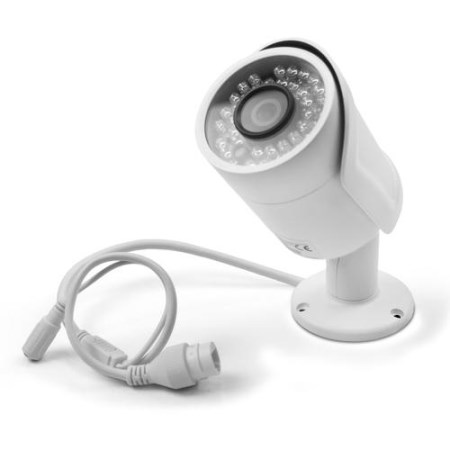Many of us have qualms about IP security surveillance cameras. Still, they are getting more and more prevalent, so it would be thoughtless to ignore this expanding industry and continue to favour analogue cameras.

What is a digital camera?
Although ‘IP camera’ is a common name used to describe these cameras, the correct term is ‘digital cameras’. Analogue cameras produce an analogue signal, and you must connect them to a device that converts the analogue signals into digital.
Many of us find it difficult to imagine a day without our smartphones, as we all know, the world is virtually entirely digital. Digital cameras best meet the demands of the digital age. It’s as simple as installing a webcam, connecting it to the router, and using the IP address or domain name to view the camera.
High Resolution
Compared to analogue cameras, digital cameras produce better images. It’s because analogue cameras generate signals through progressive scanning lines, but IP cameras output signals are digital pixels, which is how they produce a video. Thus, there is no resolution cap for these cameras. The Avigilon 3.0C-H6M-D1-IR H6 Mini Dome camera is a perfect example of a digital camera with exceptional image quality that fits the budget for smaller applications.
AI Security Cameras
As humans increasingly rely on AI for datafication to support decision-making processes, AI is transforming how IP cameras are used in the security surveillance market. IP cameras will make it simpler to supply the digital data that AI needs to process. The physical threat detection solution supplier Scylla AI collaborates with numerous CCTV manufacturers to offer an AI-based solution. Furthermore, the number of AI-based video surveillance systems has recently increased significantly, and IP cameras work well with these solutions.
Digital cameras and Encryption
Although data security might be seen as a benefit of IP cameras, there are cons as well. When data is transmitted over the internet, IP cameras can add an additional level of security by encrypting the data.
Features
The many features of IP cameras include multiple-user access, customisable settings, voice over IP, power over ethernet, local storage using portable devices like SD cards, input and output relays for connecting with other security equipment, among other advantages.
The majority of modern IP cameras include plug-and-play features, which make it simple to install and configure them. Google Nest or Amazon Ring cameras are two examples.
Open platform
As most security cameras support the open platform ONVIF, they are easy to integrate with other IP-based security products such as home automation systems, burglar alarm systems, fire alarm systems, access control systems, and so on. With the integration of digital cameras and an access control system, Cube was able to assist a complete automated storage facility for a leading self-storage company in the UK.
Is the world of security surveillance about to be dominated by digital cameras?
I’m confident that automation and AI will be big things for humanity. There will be a sharp increase in the number of IP cameras in the market to prepare for this change.
The recommendation is to use the existing analogue CCTV cameras as long as they serve your needs, and before making any new camera purchase, look at the digital camera option. I hope you found this post interesting, and don’t forget to sign up for our newsletters to read more posts like this one. Visit our website to learn more about the training and recruitment services we offer.
